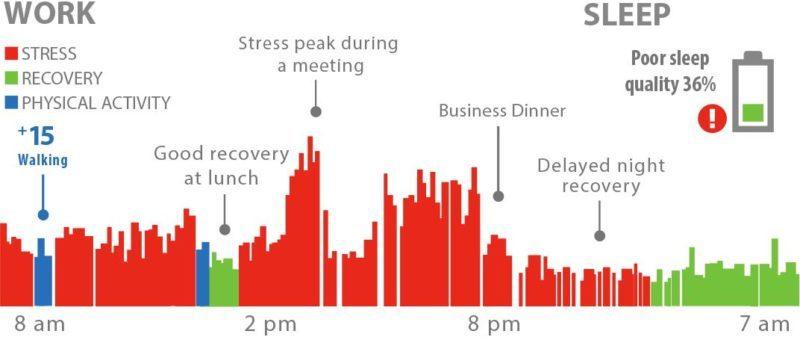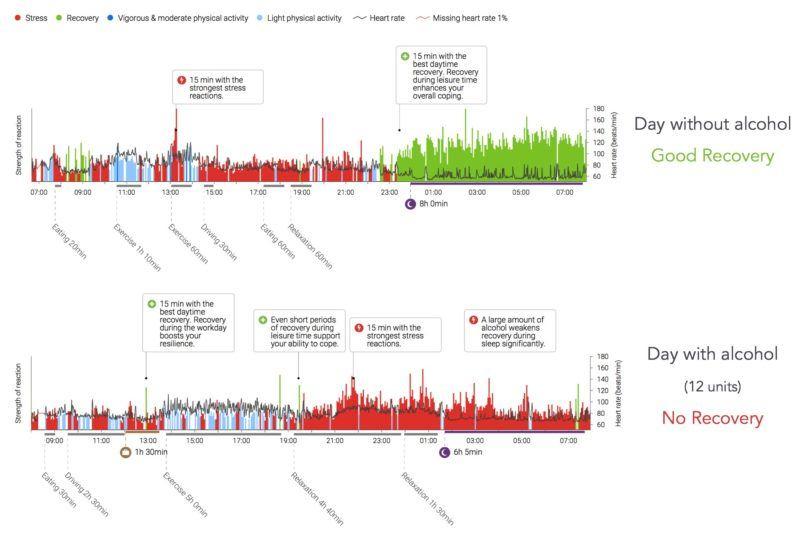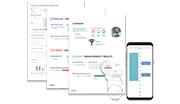
Dr. Jonathan Bloomfield is the director of Support To Perform, a consultancy business which serves to enhance employee wellbeing, engagement and productivity and uses Firstbeat Lifestyle Assessment as part of this. He specializes in the areas of sleep, fatigue and recovery and has deep knowledge across the areas of stress, physical activity, fitness and nutrition.
As we get started into 2019, it becomes that time of year again where we promise ourselves that we will make positive lifestyle changes and get ourselves into better shape. However, the survival of New Year’s resolutions past just a few weeks (or even a few days for some) suggests that our ambitions for lifestyle change do not match the reality of what’s sustainable. To give a helping hand this year, I’m sharing some tips from a recent report from the World Cancer Research Fund which provides some great direction for living healthier based on a decade’s worth of research.
1. Move More (but also sit less)
Physical activity protects against several types of disease. Counting steps is a popular method for increasing activity, but be aware that not all steps are created equally and it’s equally important to be working up to 150 minutes of moderate-intensity activity such as brisk walking (e.g. 3 x 10min walks per day), or 75 minutes of vigorous activity, every week and ideally spread across the week rather than all at once. If you’re really out of shape, you should build things very gradually and think long-term and always check with your doctor that you are safe to exercise.
Avoid long periods of sitting still and interrupt frequently with movement breaks. The first link between stillness and illness was established in a study of London bus drivers and conductors in the 1950s. Sitting still for long periods slows down the metabolism and affects our ability to regulate our blood sugar, blood pressure and how to metabolize fat, as well as causing weaker muscles and bones.
Committing to regular movement breaks during the day, as well as reaching the required levels of MVPA across 52 weeks of the year, is one of the best decisions you can make for your health, especially for your heart. Having better fitness is now being regarded as a vital sign and a way of reducing all-cause mortality. Improving how well your body can utilize oxygen lowers the risk of early death and the fitter you are, the stronger are those effects, shown in a study of 120,000 adults. However, if your current fitness is regarded to be low, the good news is that even a small increase in your fitness level can have significant reductions in risk of heart disease and heart attack.
One of the most popular services I provide to my Executive clients all over the UK is a Firstbeat Lifestyle Assessment which measures stress, sleep and fitness through a body-worn device that you wear for 5 days and nights as you go about your business. During this period, all you have to do is go for a non-stop 30min brisk walk on flat terrain and you’ll have an estimated VO2max score and how that benchmarks against your age and gender. The device also tracks all your physical activity across the 5-days and nights and reports total time in light, moderate and vigorous activity classifications. If you’re interested in the assessment and follow up coaching, get in touch via the details at the end of this blog.
2. Minimize “Fast,” Processed, and Sugary Food
Fast food, processed food, and baked goods have been stripped of nutrients and fibre, and they tend to be loaded with sugar, fat, and calories. They are also widely available almost everywhere we go. We face an abundance of food choices on a daily basis (estimated to be 200+) with sights, sounds and smells providing several food cues telling you that you want to eat, even when you’re not hungry.
Some evidence exists that just being in an area where fast food is available make us feel hungry and likely to consume more calories than when in a more neutral environment. The fast food industry knows exactly how to tempt us with images, scents and sounds to convince us (without too much effort) into buying their food, and they are very good at it. In addition, when we are tired, we are even more vulnerable as our appetite and satiety hormones become unbalanced and our cravings for calorie dense foods becomes irresistible (and usually at the wrong time of day for the body clock too).
To manage these urges better, keep your blood sugar in balance by not skipping meals and eating nourishing (real) foods regularly as well as making sure to value your sleep to maintain your body clock and manage your fatigue. Then be aware that fast food marketing is out for your pocket and being savvy to their strategies is the first step to having a better waistline.

The Lifestyle Assessment report shows periods of stress, recovery and physical activity in a 24-hour day
The Lifestyle Assessment also measures your stress and recovery balance by reporting the amount and quality of sleep you are getting. This should be the first area to look to address when making lifestyle changes as better stress/recovery balance leads to better overall health behavior. Learning more about your sleep provides a major benefit towards improvements in lifestyle.
3. Minimize Alcohol
Even small amounts of alcohol can have a huge impact on your wellbeing and risk to diseases. If you do drink, be sure to stay within national guidelines (no more than one drink a day for women, two for men). Alcohol places an additional stress on the body when consumed and, in particular, ruins the quality of your sleep later that night. The Lifestyle Assessment I provide also shows the impact of alcohol on your body and how it harms the overall stress/recovery balance.
Have a look at the image below which is of the same person on two consecutive days, one without alcohol and one which includes consumption of 12 units after playing a round of golf.
As we approach the month of January, and many feel they have over indulged a bit too much over Christmas, there is an urge to sign up for a ‘dry January’ in an effort to readdress the balance. I would, however, advise some caution on this “All or None” approach for those who are regular drinkers and if your ambition is to make lasting changes to your annual alcohol intake. Come February, expect a negative rebound as you’ll be desperate to reward your good behavior and it’ll soon be back to “All” again after a period of “None”.
Instead, consider ways to achieve moderation and therefore more sustainable changes. As mentioned, changing long established habits is not straight forward and research suggests the best strategy is to concentrate on either starting new habits or stopping old habits, but not a combination at the same time. Another important aspect is to start small and realistic with the changes and then keep making small and incremental progressions by tracking them in a journal and scheduling reviews in a calendar, whilst keeping a positive mindset throughout and accepting setbacks will happen along the way but anticipating and planning how to deal with them.
Thanks very much for reading, I hope this article has provided you with at least one thing that you’ll focus on doing better in 2019. Wishing you a very healthy & successful 2019.
This original version of this blog can be found here.
You might also be interested in

4 Tips to Help You Thrive in the First Week Back at Work
Hit the ground running in 2019 with these tips about returning to work.

Rest Is Not the Same as Recovery – And 4 Other Surprising Things I’ve Learned About Resilience
What Firstbeat’s Heart Rate Variability analytics can tell you about resilience.

How to Motivate Yourself to Exercise During the Cold Winter Months
As the cold nights begin, fitness expert John Allison reveals how to stay motivated to exercise.




